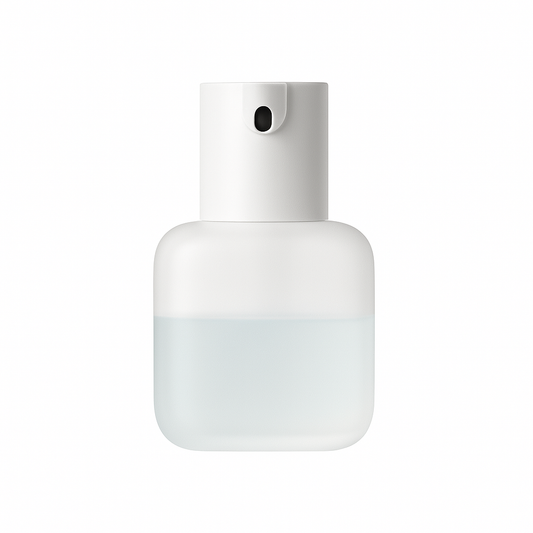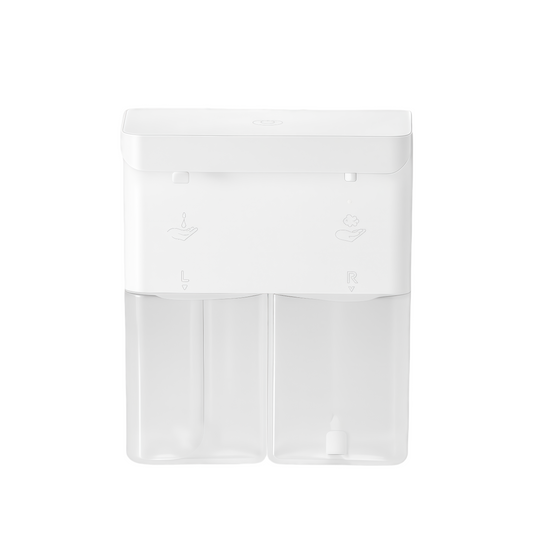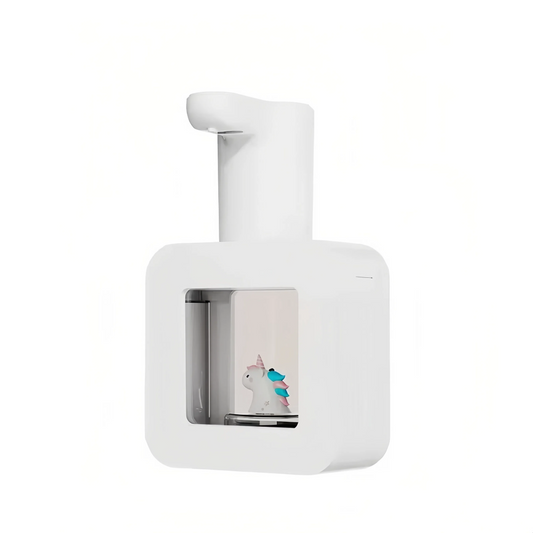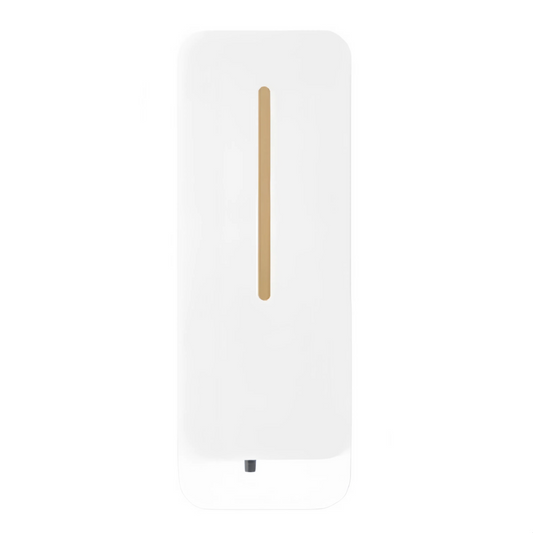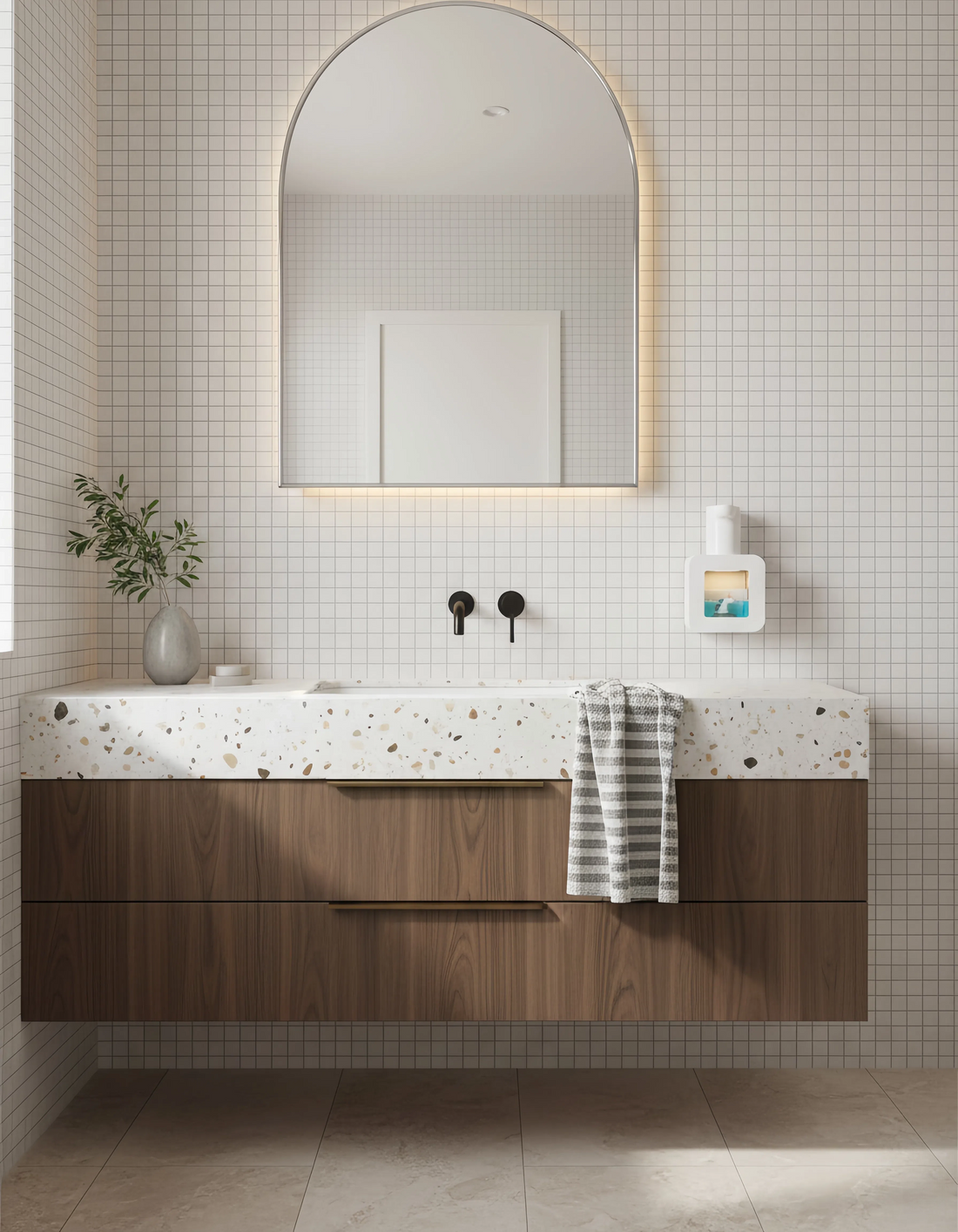
Why Is My Foam Soap Watery? Common Causes and Easy Fixes
Share
Foaming soap dispensers are a popular choice in bathrooms and kitchens because they deliver a rich lather using less soap and water, making them economical and eco-friendly.
If you’ve yet to purchase one for yourself, you can check out a range here.
If you’ve ever pumped your dispenser and noticed the soap is thin, runny, or just plain watery instead of forming a proper foam, you’re not alone.
So, why is your foam soap watery? There are several common reasons behind this issue—some are due to the soap itself, while others involve the dispenser. Let’s explore the causes and what you can do to fix it.
1. You’re Using the Wrong Type of Soap
Foaming soap dispensers are specially designed to work with foaming soap, not regular liquid soap. If you're using standard liquid hand soap without diluting it properly (or at all), it might not create foam and could come out watery or inconsistent.
Why it happens:
Regular soap is too thick and needs to be diluted to work with a foaming dispenser.
Without the right soap-to-water ratio, the mixture won’t foam properly.
Fix:
If you're using regular liquid soap, dilute it with water—usually 1 part soap to 3 or 4 parts water is a good starting ratio. Shake well to mix.
Or, buy pre-formulated foaming soap, which is already designed to dispense as foam without dilution.
2. Incorrect Soap-to-Water Ratio
Even when you are using regular liquid soap with water to make your own foaming soap, the mix needs to be just right. Too much water, and it will come out watery; too much soap, and it might clog the pump.
Why it happens:
If the ratio is off, the soap will be too thin (watery) or too thick (clogs the pump).
Fix:
Use 1:4 ratio (one part liquid soap to four parts water) as a guideline, and adjust as needed.
Mix the solution thoroughly by shaking the bottle.
3. Clogged or Faulty Dispenser Pump
If your dispenser’s pump is partially clogged or worn out, it might fail to create the necessary air and soap mixture to produce foam. Instead, it may just spit out liquid.
Why it happens:
Over time, dried soap residue can clog the pump mechanism.
The air chamber inside the pump might not be working properly.
Fix:
Disassemble the pump and rinse it thoroughly with warm water to remove buildup.
Soak the pump in vinegar if there’s mineral buildup from hard water.
If it’s still not working after cleaning, it may be time to replace the dispenser.
A few options are available here, of which can also help elevate your kitchen aesthetics
4. Not Enough Air Mixing in the Pump
Foam soap dispensers work by mixing air with the diluted soap solution to create a foam. If the pump isn’t pulling in enough air—or the mechanism that does this is damaged—you’ll get runny, watery soap instead of foam.
Why it happens:
Air chamber malfunction or internal damage to the pump.
Improper alignment or blockage in the air intake.
Fix:
Try pumping the dispenser a few times quickly to “prime” it.
Make sure the dispenser is upright and not overfilled.
If issues persist, the air mechanism may be broken, and a replacement is likely needed. Take a look at our top selling soap dispenser Lume.
5. Water Separation Over Time
If you've mixed your own foaming soap, it’s possible that the soap and water have separated after sitting for a while. This can cause the liquid soap to become very watery during the first few pumps.
Why it happens:
Homemade or DIY mixtures may separate, especially without stabilizers or emulsifiers.
Fix:
Shake the dispenser gently every few days to keep the solution mixed.
Consider using distilled water to help the mixture stay uniform longer.
6. Temperature or Storage Issues
If the dispenser is stored in a very cold or hot area (like near a window or in a cold bathroom), the soap mixture may become thinner or separate.
Why it happens:
Temperature extremes can affect soap and how well it foams.
Fix:
Store the dispenser at room temperature.
If it’s been in the cold, allow it to warm up before use and give it a shake.
✅ Tips to Keep Your Foam Soap Working Perfectly
Use the right soap: Buy foaming soap or dilute regular soap correctly.
Clean the pump regularly: Every few weeks, rinse it with warm water to prevent clogs.
Shake before use: Especially if you've made your own soap solution.
Don’t overfill: Leave some air space in the dispenser for proper mixing.
Prime the pump: If it hasn’t been used in a while, pump it a few times to get the foam going.
To match your liquid soap, you should choose an appropriate soap dispenser. We've got a few that dispenses multiple types of liquid. Check out our EcoDuo Automatic Soap Dispenser
Final Thoughts
A watery foam soap dispenser is usually an easy fix once you know what’s causing the issue. Whether it’s a poor soap-to-water ratio, a clog, or the wrong kind of soap, most problems can be resolved with a little troubleshooting. By keeping your dispenser clean and using the correct soap mixture, you’ll enjoy that satisfying, fluffy foam with every pump.
If you're still having trouble after trying these fixes, it might be time to invest in a higher-quality foaming dispenser—some are better designed for durability and consistent performance. Check out some here

